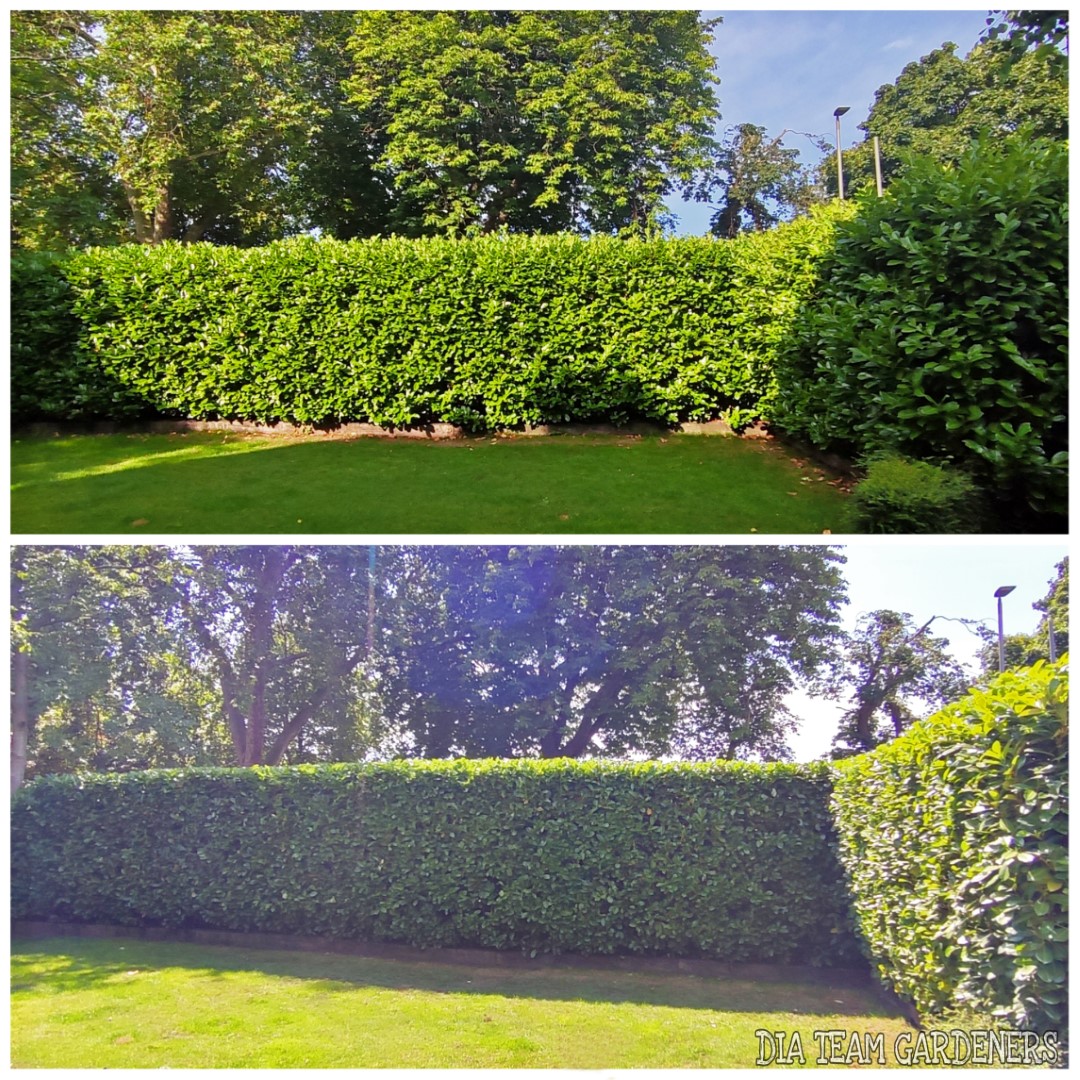The privacy hedge
Privacy screens are always valuable, as they give you peace and shade. Also, they are a great sound insulation to reduce outside noise and act to protect against strong winds. In addition, in the winter they help in avoiding the accumulation of snow in your yard. And, last but not least, they add beauty to the overall look of the exterior.
To plant and maintain a hedge properly, ask your local professional gardener for proper advice. We will introduce you to the most important steps you need to know if you have decided to plant a privacy hedge.
Determine the type of tree
Evergreen plants are ideal for reducing noise, not accumulating snow, and protecting all year round. Deciduous trees offer more variety, including spring or fall flowers, but cannot provide a year-round screen.
Determine the height of your privacy hedge
You can do this by placing a ladder or a person who stands where you plan to place the hedge. This will best decide how high you want your screen to be.
Examples: American Arborvitae reaches a height of 40′ to 60′; Green Giant Arborvitae is a fast-growing hedge that grows up to 60′ in height; Emerald Arborvitae grows 10 to 15 inches, but can be cut shorter; Nigra Arborvitae grows 20 to 30 inches, but needs good pruning; Sharon’s rose is a great hedge, and North Privet is a fast-growing shrub that is suitable for almost any yard.
Estimate your available width
Once you have determined the height of your hedge, the next step is to estimate how much space you have available. If the space is large, then you can make a double or triple row, but if space is limited, then consider some of the following trees or shrubs.
Examples:
American Arborvitae extend up to 15′ in width in the wild, but can be cut shorter in hedge conditions; Emerald Arborvitae reaches a width of 3 to 4 inches in the wild, but only to a width of 2 inches in a hedge. Korean boxwood can grow 4 to 6 inches wide in the wild and can be trimmed to fit in a smaller space. North Privet reaches a width of 4 to 6 inches in nature but also allows trimming to the desired width.
Choose a plant
See again the examples in step 2.
Determine the rows and spaces
The distance between the rows is based on the width of the crown, and to avoid the accumulation of roots, set from 12 “to 24” at a distance, measuring from the center of the plant. The distance will depend on the type of shrub or tree you choose, as well as how close you want them when they reach maturity. In the case of evergreen trees, a distance of 6-8 feet between the trees is required.
Pines and spruce trees need at least 10-12 feet between the trees. American Arborvitae can be defended 3 feet apart.
If you want evergreen shrubs, then plant them 3 to 4 feet apart. Narrow shrubs such as Emerald Arborvitae or Korean Boxwood can be arranged 24 inches apart. As for deciduous shrubs: North Privet can be planted 24 inches apart, and Sharon’s Rose – 2-3 feet apart.
Map your planting area
You can do this by using wooden stakes in the ground at each end and tying a string between them.
Plant your shrubs
Contact your gardener to help you plant the shrubs properly to ensure your privacy.
Your privacy hedge needs good trimming and maintenance. All about is, you can get the best advice from your professional gardener nearby.


